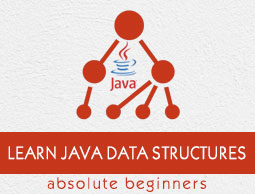
- Java Data Structures Resources
- Java Data Structures - Quick Guide
- Java Data Structures - Resources
- Java Data Structures - Discussion
Java Data Structures - HashTable Class
Hash Table is a data structure which stores data in an associative manner. In a hash table, data is stored in an array format, where each data value has its own unique index value. Access of data becomes very fast if we know the index of the desired data.
Thus, it becomes a data structure in which insertion and search operations are very fast irrespective of the size of the data. Hash Table uses an array as a storage medium and uses hash technique to generate an index where an element is to be inserted or is to be located from.
The HashTable Class Java
Hashtable was part of the original java.util and is a concrete implementation of a Dictionary.
However, Java 2 re-engineered Hashtable so that it also implements the Map interface. Thus, Hashtable is now integrated into the collections framework. It is similar to HashMap, but is synchronized.
Like HashMap, Hashtable stores key/value pairs in a hash table. When using a Hashtable, you specify an object that is used as a key, and the value that you want linked to that key. The key is then hashed, and the resulting hash code is used as the index at which the value is stored within the table.
Following is the list of constructors provided by the HashTable class.
| Sr.No. | Constructor and Description |
|---|---|
| 1 |
Hashtable( ) This is the default constructor of the hash table it instantiates the Hashtable class. |
| 2 |
Hashtable(int size) This constructor accepts an integer parameter and creates a hash table that has an initial size specified by integer value size. |
| 3 |
Hashtable(int size, float fillRatio) This creates a hash table that has an initial size specified by size and a fill ratio specified by fillRatio. This ratio must be between 0.0 and 1.0, and it determines how full the hash table can be before it is resized upward. |
| 4 |
Hashtable(Map < ? extends K, ? extends V > t) This constructs a Hashtable with the given mappings. |
Apart from the methods defined by Map interface, Hashtable defines the following methods
| Sr.No | Method and Description |
|---|---|
| 1 |
void clear( ) Resets and empties the hash table. |
| 2 |
Object clone( ) Returns a duplicate of the invoking object. |
| 3 |
boolean contains(Object value) Returns true if some value equal to the value exists within the hash table. Returns false if the value isn't found. |
| 4 |
boolean containsKey(Object key) Returns true if some key equal to the key exists within the hash table. Returns false if the key isn't found. |
| 5 |
boolean containsValue(Object value) Returns true if some value equal to the value exists within the hash table. Returns false if the value isn't found. |
| 6 |
Enumeration elements( ) Returns an enumeration of the values contained in the hash table. |
| 7 |
Object get(Object key) Returns the object that contains the value associated with the key. If the key is not in the hash table, a null object is returned. |
| 8 |
boolean isEmpty( ) Returns true if the hash table is empty; returns false if it contains at least one key. |
| 9 |
Enumeration keys( ) Returns an enumeration of the keys contained in the hash table. |
| 10 |
Object put(Object key, Object value) Inserts a key and a value into the hash table. Returns null if the key isn't already in the hash table; returns the previous value associated with the key if the key is already in the hash table. |
| 11 |
void rehash( ) Increases the size of the hash table and rehashes all of its keys. |
| 12 |
Object remove(Object key) Removes the key and its value. Returns the value associated with the key. If the key is not in the hash table, a null object is returned. |
| 13 |
int size( ) Returns the number of entries in the hash table. |
| 14 |
String toString( ) Returns the string equivalent of a hash table. |
Example
The following program illustrates several of the methods supported by this data structure
import java.util.*;
public class HashTableDemo {
public static void main(String args[]) {
// Create a hash map
Hashtable balance = new Hashtable();
Enumeration names;
String str;
double bal;
balance.put("Zara", new Double(3434.34));
balance.put("Mahnaz", new Double(123.22));
balance.put("Ayan", new Double(1378.00));
balance.put("Daisy", new Double(99.22));
balance.put("Qadir", new Double(-19.08));
// Show all balances in hash table.
names = balance.keys();
while(names.hasMoreElements()) {
str = (String) names.nextElement();
System.out.println(str + ": " + balance.get(str));
}
System.out.println();
// Deposit 1,000 into Zara's account
bal = ((Double)balance.get("Zara")).doubleValue();
balance.put("Zara", new Double(bal + 1000));
System.out.println("Zara's new balance: " + balance.get("Zara"));
}
}
Output
Qadir: -19.08 Zara: 3434.34 Mahnaz: 123.22 Daisy: 99.22 Ayan: 1378.0 Zara's new balance: 4434.34